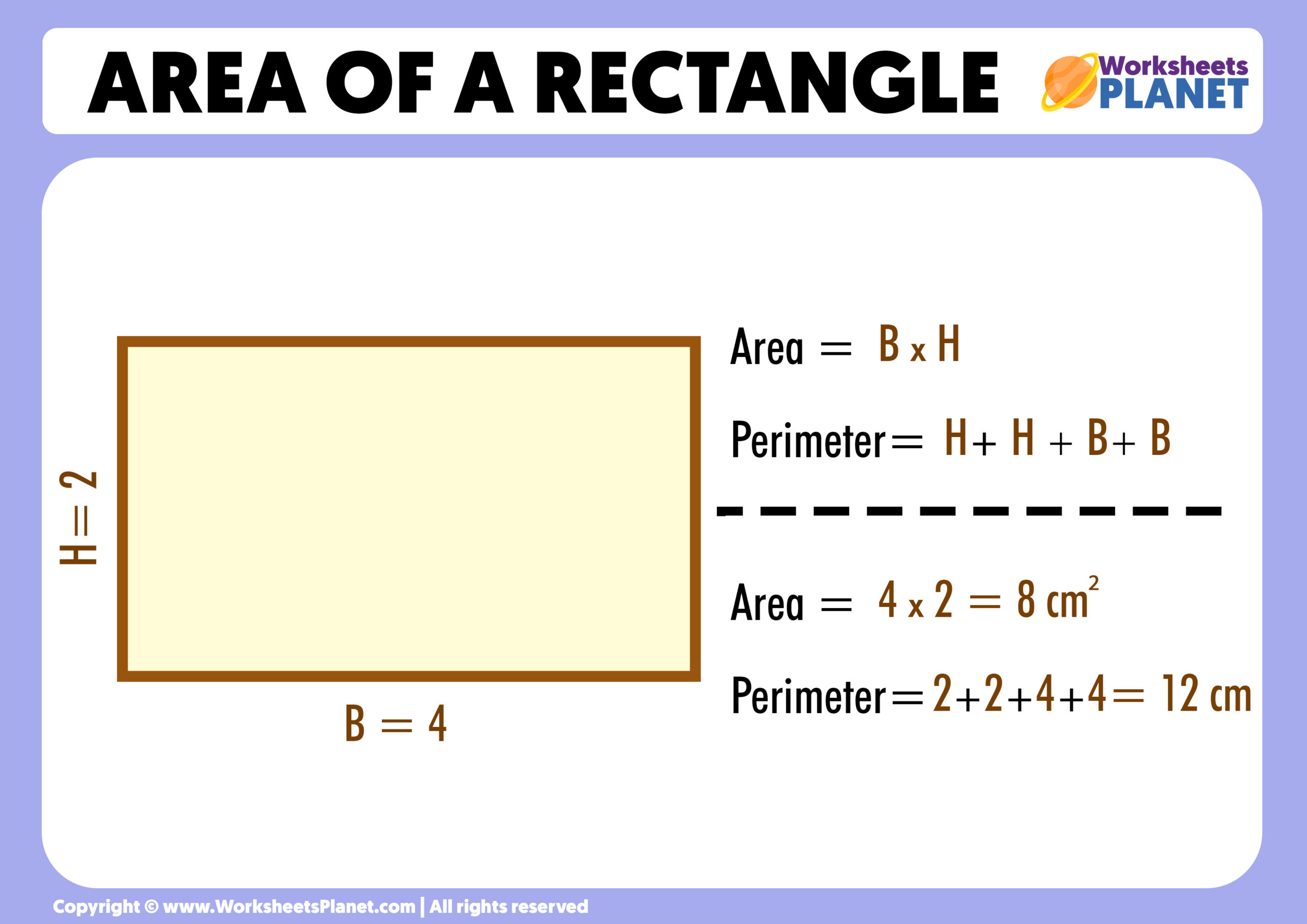The rectangle is a quadrilateral, which means that it has four sides. Its opposite sides are equal in length, so the two sides marking its size are equal, and the two marking its width are equal. For example, if one side of the rectangle is 10, then the opposite side will also be 10.
The formula for the area of a rectangle
The area of a rectangle is equal to the base of the rectangle times the height of the rectangle. Unlike the square, the sides of the rectangle are equal “two to two”, so we have to multiply its base by its height to calculate the area of the rectangle.
So the formula to calculate the area of a rectangle is as follows:

Example of the area of a rectangle
Given the formula for the area of a rectangle, here you have a solved example so you can see how to find the area of this type of quadrilateral.
What is the area of the following rectangle whose length and width are 6 cm and 4 cm, respectively?
To find the area of this rectangle, we have to apply the formula for the area of a rectangle (seen above):
A=B x H
Now we substitute the lengths of the base and the height in the formula and calculate the area of the rectangle:
A=4 x 2=8 cm2

